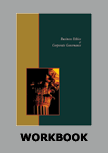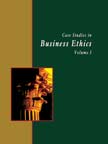BP: Putting Profits Before Safety?




|
|
ICMR HOME | Case Studies Collection
Case Details:
Case Code : BECG071
Case Length : 21 Pages
Period : 2005-2007
Pub Date : 2007
Teaching Note : Available
Organization : BP Plc.
Industry : Oil and Chemical
Countries : USA, Europe
To download BP: Putting Profits Before Safety? case study
(Case Code: BECG071) click on the button below, and select the case from the list of available cases:

Price:
For delivery in electronic format: Rs. 400;
For delivery through courier (within India): Rs. 400 + Rs. 25 for Shipping & Handling Charges
»Business Ethics Case Studies
» Case Studies Collection
» ICMR Home
» View Detailed Pricing Info
» How To Order This Case
» Business Case Studies
» Case Studies by Area
» Case Studies by Industry
» Case Studies by Company

Please note:
This case study was compiled from published sources, and is intended to be used as a basis for class discussion. It is not intended to illustrate either effective or ineffective handling of a management situation. Nor is it a primary information source.
|
|
<< Previous
Excerpts Contd...
The Baker Report
|
On January 16, 2007, the Baker report was released at Houston, Texas. As
expected, the Baker report was very critical of BP's approach to process safety
at its refineries in the US. The panel said that a lack of focus on
manufacturing process safety on BP's part contributed to the March 2005 accident
in Texas. It said that BP had failed to give process safety the same emphasis
that it gave to personal safety and environmental initiatives. The report said
that the management should have paid more attention to earlier incidents, such
as product chemical releases and fires at the plant. The Baker report also said
that the top management at BP had failed, as they had apparently ignored
concerns raised by lower-level employees...
|
|
Critics Question BP'S "Green"Image and Culture
The Baker report was a big blow to BP's reputation and a major embarrassment for
BP's top brass. The safety lapses at BP coupled with the findings of the Baker
report led many to question BP's integrity as well as its corporate culture.
Some wondered whether the oil and gas behemoth built by Browne was
“fundamentally flawed”. The announcement of Browne's early departure was viewed
by some as an admission of its flawed practices...
Damage Control at BP
Soon after the Baker report was released, BP said that it would implement its
recommendations. Browne said that the findings of the report were consistent
with its own findings and were in fact already being implemented in BP's
refineries. Browne also said that it would take time to bring about big changes
in a large organization and that still a lot needed to be done...
|
|
Outlook
Analysts felt that BP was already on the “right track” as far as its
safety culture was concerned. They expected BP to spend generously on
process safety experts, health and safety auditors, process engineers,
etc. Expenditure on equipment was also expected to rise. Some experts
felt that the order from the top was to spend – and this time as before,
the employees would fall in line and obey. Some analysts felt that it
would be a tough task for anyone to fit into Browne's shoes. But on the
positive side, Browne was leaving behind a “strong and well-positioned”
oil company... |
Exhibits
Exhibit I: The Old and New Logo of BP
Exhibit II: BP's Financial Summary (In US$ Billion)
Exhibit III: Prudhoe Bay: Corrosion Spend Versus Production
Exhibit IV: Chart of BP's Stock Price at the New York Stock Exchange
Exhibit V: The 10 Recommendations of the Baker Panel
|
|




